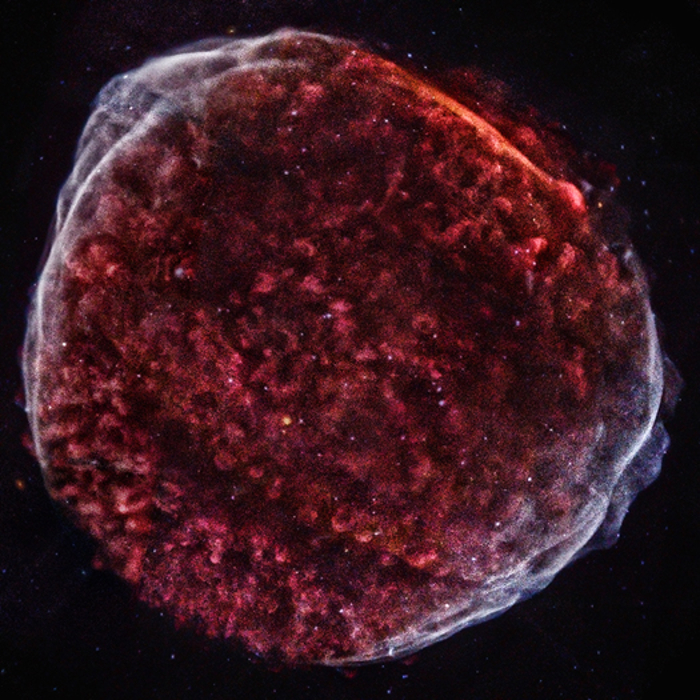
 Credit: NASA/CXC/Middlebury College/F.Winkler
Credit: NASA/CXC/Middlebury College/F.Winkler
Mosaic of 1006
The biggest event of the year 1006 was the sudden appearance of a "new star" on May 1 of that year, and was seen and reported throughout the world. We now know that this "new star" was the sudden explosive deflagration of a very old star, a so-called white dwarf, the burnt-out core of a low-mass star that shed its outer layers after its nuclear fuel ran out. White dwarfs are supported by a sub-atomic quantum-mechanical effect known as electron degeneracy pressure. But electron degeneracy pressure can only support a limited amount of mass, about 1.4 times the mass of the Sun. If the white dwarf gains mass, either by stripping it from a companion star or by the merger of two white dwarfs, the mass limit (known as the Chandrasekhar mass) may be exceeded. If that happens, the white dwarf will explode like a Sun-sized thermonuclear bomb. The image above is a new X-ray mosaic of the remnants of SN 1006, taken by the Chandra X-ray Observatory. This image is the most detailed view of the remains of a white dwarf supernova, and will lead to strong constraints on the ways such white dwarfs explode. Detailed knowledge of the explosion of these white dwarfs is important, since such explosions are regarded by astronomers as "standard candles". Studies of white dwarf supernovae in the ancient Universe have lead to the discovery that the expansion of the Universe is being accelerated by a mysterious force known as "Dark Energy".
Published: April 29, 2013
<
HEA Dictionary ● Archive
● Search HEAPOW
● Other Languages
● HEAPOW on Facebook
● Download all Images
● Education ● HEAD
>

Each week the HEASARC
brings you new, exciting and beautiful images from X-ray and Gamma ray
astronomy. Check back each week and be sure to check out the HEAPOW archive!
Page Author: Dr. Michael F. Corcoran
Last modified Monday, 26-Feb-2024 17:46:49 EST


